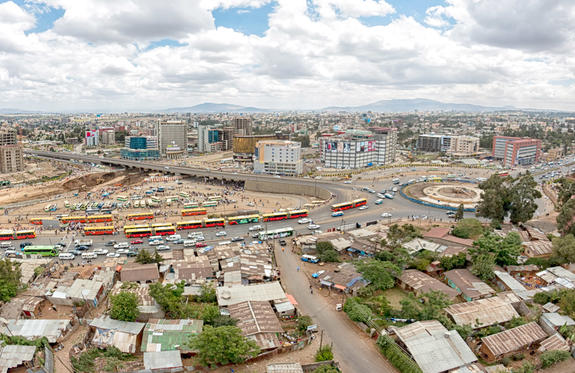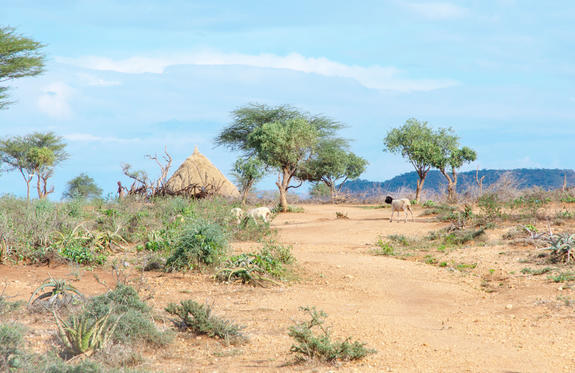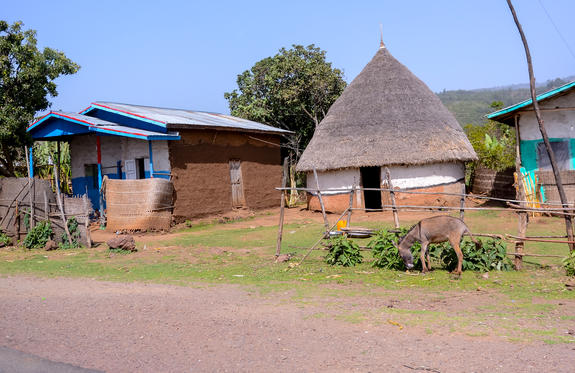
Located in the highlands fringing the Great Rift Valley, Addis Ababa serves as the political, cultural and commercial centre of Ethiopia. This sprawling city rests in the foothills of the Entoto Mountains and features a mix of traditional homes, elegant villas, and tall office buildings. Visitors can look forward to a selection of wonderful activities including: visiting the National Museum, displaying local art, traditional crafts and prehistoric fossils; exploring the copper-domed Holy Trinity Cathedral, a Neo-Baroque architectural landmark; and sampling rich Ethiopian coffee as well as the memorable cuisine featuring spicy stews and Ethiopia’s signature Injera bread.

Situated on the shores of Lake Awassa, Hawassa serves as the capital of southern Ethiopia. Also known as Awassa or Awasa, it is one of the country’s fastest growing settlements and is establishing itself as a popular resort town with a variety of attractions including a bustling market, a vibrant nightlife and impressive cultural sites like the St. Gabriel Orthodox Church. Visitors are also treated to splendid views of the lake and the Great Rift Valley beyond it. The lake offers great opportunities for fishing, bird watching and even catching a glimpse of some lurking local hippos.

Situated in southern Ethiopia at the base of the western side of the Great Rift Valley, the city of Arba Minch is the largest city in the Gamo Gofa Zone. Surrounded by forested mountains and home to two of Ethiopia’s largest Rift Valley Lakes, Arba Minch is named after the abundant springs found in the area. This resort town rests on the edge of Lake Chamo where it has a stunning view of the aptly named ‘Bridge of God’, an isthmus that separates Lake Chamo from the neighbouring Lake Abaya. This stretch of land is home to zebras, gazelle, kudus and other wildlife. The Dorze village is also a popular attraction in Arba Minch – here, tourists can visit the famous beehive huts built by the Dorze tribe.

Resting alongside the Sagan River in southwestern Ethiopia, Konso (also known as Karati) is famous for its incredible display of human adaptation to challenging geographical conditions. The landscape here is arid, dry and hilly, but the people created a unique system of living: stone-walled terraces and fortified settlements up the hillsides, which stop soil erosion, collect the maximum amount of water, and create terraced fields for agricultural use. The community has succeeded in growing millet, corn, and many other grains using this system, and also raising cattle, sheep and goats. The system was put in place more than 400 years ago, and many other wonderful ancient cultural traditions remain. Groups of anthropomorphic wooden statues pay homage to respected community members and heroic events, while a complex decorative stone system marks the passing of generations of leaders.

Located in southwestern Ethiopia, near the borders of Sudan and Kenya, Jinka is the largest town in the Debub Omo Zone. It serves as an excellent base from which to explore the surrounding area. This remote market town is home to the Mursi people, who are well known for their elaborate lip plates made of clay. At the South Omo Research Center and Museum, visitors can learn more about the Mursi, as well as other groups in the region, through a series of exhibits detailing the cultures and customs of local tribes. Nature enthusiasts will enjoy the nearby Mago National Park, where abundant wildlife finds shelter in the dense acacia woodland.

This small market town in southwestern Ethiopia functions as a central transport hub as well as an important meeting point for the area’s weekly Monday market. The local Hamer inhabitants of the surrounding villages flock here to buy and sell local produce and handicrafts. Visitors to the area can enjoy culturally fascinating guided tours of the surrounding villages. Popular cultural attractions include traditional Hamer dance performances and exhilarating ‘Jumping of the Bulls’ ceremonies which form the culmination of a three-day long rite of passage for any young man within the Hamer tribe.Turmi is a great choice of destination for travellers in search of a unique and authentic African experience in one of the most remote places on the continent.

As previously described

Situated in the foreground of the mighty Arsi Mountains, in the region of Oromia, Lake Langano is one of the few bilharzia-free lakes in Ethiopia. Stretching over 200 square kilometres, Lake Langano is one of Ethiopia's most visited lakes and is a popular spot for swimming, watersports and hippo viewing. It is the perfect stopover point on a road trip down the Rift Valley. The area surrounding the lake is home to baboons, warthogs, hippos and a variety of birds that makes for good bird watching. More wildlife can be found in East Langano Nature Reserve on the lake's eastern shore. Here, visitors can spot Colobus monkeys and more than 300 bird species living in the beautiful lakeside forest. Other popular activities include: camping, mountain climbing, biking, fishing and photography.





